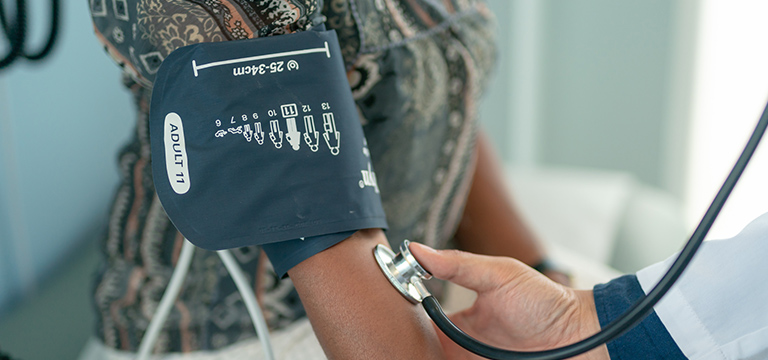High Blood Pressure and What the Numbers Mean for You

Having high blood pressure can worsen certain health concerns and put you at risk for things like heart attack, stroke and kidney failure. When it comes to understanding and managing high blood pressure, it’s all about the numbers. The only way to know if you have high blood pressure (also known as hypertension) is to have your blood pressure tested.
| BLOOD PRESSURE CATEGORY
|
SYSTOLIC mm Hg (upper number)
|
DIASTOLIC mm Hg (lower number)
|
|---|---|---|
| Normal | Less than 120 | Less than 80 |
| Elevated | 120-129 | Less than 80 |
| Hypertension Stage 1 | 130-139 | 80-89
|
| Hypertension Stage 2 | 140 or higher | 90 or higher |
What those numbers mean:
- Systolic blood pressure indicates how much pressure your blood is exerting against your artery walls when the heart beats.
- Diastolic blood pressure indicates how much pressure your blood is exerting against your artery walls while the heart is resting between beats.
Is one number more important than the other?
Usually, more attention is given to systolic blood pressure as it’s a major risk factor for people over 50 with heart disease. It’s common for systolic blood pressure to rise as you get older. However an elevated reading of either systolic or diastolic blood pressure may be used to make a high blood pressure diagnosis.
What you can do about it:
- Watch your weight
- Eat a healthy diet
- Exercise regularly
- Quit smoking
- Reduce sodium intake
- Cut back on caffeine
- Reduce stress
- Monitor your blood pressure at home
- Speak to your doctor regularly
The Hypertension Management Program can help members monitor their blood pressure numbers at home with a blood pressure monitor at no out-of-pocket cost.*
*You must be 18 or older to receive this benefit.


